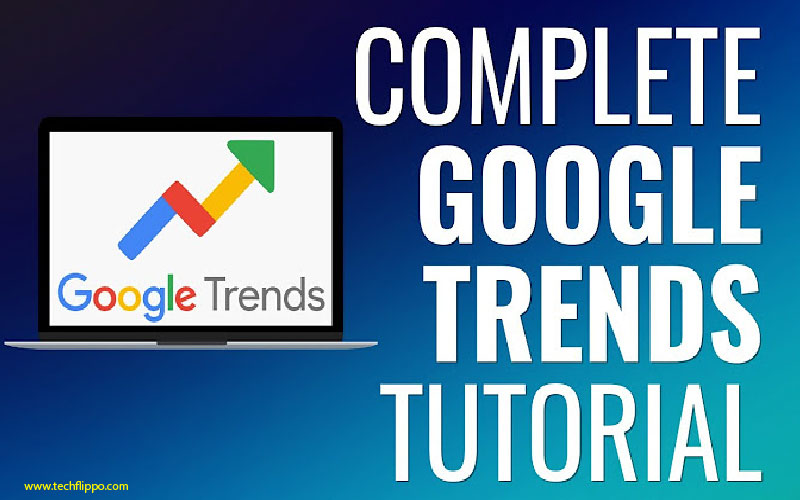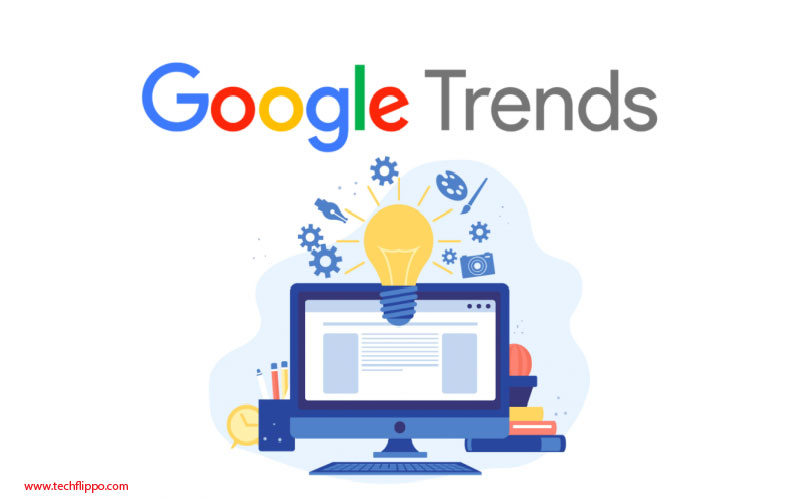Google Trends for Effective Marketing Campaigns
In today’s fast-paced digital world, staying ahead in marketing is more crucial than ever. With consumers constantly shifting their interests and preferences, how can brands effectively reach their target audience? Enter Google Trends—a powerful tool that unlocks the secrets of what people are searching for online. By tapping into real-time data on search behaviors, businesses can craft smarter marketing strategies that resonate with potential customers.
Imagine having access to a treasure trove of insights about your audience’s interests and needs. That’s exactly what Google Trends offers—an opportunity to not just keep up but thrive in an ever-evolving marketplace. Whether you’re a seasoned marketer or just starting out, understanding how to leverage this tool can transform your campaigns from ordinary to extraordinary. Let’s dive into the myriad ways Google Trends can elevate your marketing game!

Benefits of using Google Trends for marketing campaigns
Google Trends is a treasure trove for marketers looking to refine their strategies. It provides real-time insights into what consumers are searching for, allowing campaigns to align with current interests.
One of the primary benefits is its ability to uncover seasonal trends. Understanding when interest peaks can guide timing for product launches or promotions, ensuring maximum visibility.
Additionally, Google Trends helps identify emerging topics within specific niches. Marketers can spot shifts before they become mainstream and adjust their messaging accordingly.
The platform also offers regional data, revealing where particular interests lie. This localized insight allows businesses to tailor campaigns that resonate with targeted audiences effectively.
By leveraging this tool, brands can create content that not only engages but also drives conversions. The result? More relevant marketing efforts that truly connect with potential customers on a deeper level.
Understanding search trends and demographics
Understanding search trends goes beyond just numbers. It’s about deciphering the patterns behind what people are searching for. Google Trends provides a window into consumer behavior, revealing peaks in interest related to seasons, events, or emerging topics.
Demographics play a crucial role here. Different age groups have varied interests and preferences. By analyzing this data, marketers can tailor their campaigns effectively.
For instance, younger audiences might gravitate towards tech innovations while older generations may prioritize health-related searches. Knowing who’s searching helps businesses connect on a deeper level.
Additionally, geographic insights allow brands to localize content and offerings based on regional interests. This targeted approach enhances relevance and engagement with potential customers, making marketing efforts more impactful.
Utilizing Google Trends for keyword research
Keyword research is essential for any marketing strategy. Google Trends simplifies this process significantly.
By exploring various keywords, you can identify which terms are gaining traction over time. This insight helps in selecting high-potential terms that resonate with your target audience.
You can also compare multiple keywords side by side. This feature allows marketers to determine which phrases have more search interest and relevance.
Geographic data enhances your understanding, too. Knowing where specific searches originate lets you tailor content for different regions effectively.
Moreover, seasonal trends offer a peek into when particular topics spike in popularity. Aligning your campaigns with these patterns ensures timely engagement with potential customers.
Using Google Trends not only aids keyword selection but also enriches overall content strategies across platforms.
Analyzing competition and identifying market gaps
Analyzing competition through Google Trends can reveal valuable insights about what your competitors are doing and where they excel. By monitoring their search interest over time, you can pinpoint spikes in visibility correlated with specific marketing efforts.
It’s also crucial to understand the demographics behind these trends. Knowing who is searching for competitor brands helps you identify potential market gaps. Are there audiences being overlooked?
When certain keywords trend upward but lack substantial content, opportunities arise. You can create tailored strategies that cater directly to these unfulfilled needs.
This approach not only sharpens your competitive edge but also allows for innovation in product offerings or messaging that resonates with audiences longing for something new. Embracing this analytical mindset sets the stage for growth while filling those gaps left wide open by others in your industry.
Creating targeted and relevant content with Google Trends
Creating targeted content is essential in today’s digital landscape. Google Trends provides powerful insights into what people are searching for right now.
By diving into search data, you can identify trending topics relevant to your audience. This allows marketers to tailor their messaging effectively.
Use the information from Google Trends to craft blog posts, videos, or social media updates that resonate with current interests. You’ll capture attention and foster engagement when your content aligns with search behaviors.
Additionally, consider seasonal trends highlighted by the tool. Creating content around holidays or events can enhance visibility as searches spike during those times.
Integrating regional insights also helps in refining targeting strategies. Understanding local preferences ensures that your content isn’t just seen but truly connects with specific demographics.
With these approaches, leveraging Google Trends transforms standard content creation into a strategic advantage for any marketing campaign.

Measuring the success of marketing campaigns using Google Trends
Measuring the success of marketing campaigns is crucial for any business. Google Trends provides valuable insights into how your campaign resonates with potential customers.
By analyzing search queries related to your brand or product, you can track fluctuations in interest over time. A spike in searches often indicates a successful campaign or promotional event.
You can also compare data before and after launching a marketing initiative. This comparison highlights changes in consumer behavior, helping assess whether your strategies are effective.
Additionally, monitoring geographic trends allows businesses to understand which regions engage most with their content. This information enables targeted follow-up efforts that can boost future campaigns significantly.
Using Google Trends not only measures immediate impact but also informs long-term strategy development based on historical data patterns.
Case studies of successful companies using Google Trends for marketing
Nike effectively utilized Google Trends to tap into consumer sentiment during major sporting events. By analyzing search spikes related to specific athletes and competitions, they tailored their marketing campaigns to resonate with the audience’s enthusiasm.
Another notable example is Airbnb. They monitored trends in travel searches during peak seasons. This insight allowed them to optimize promotional offers and enhance user engagement through targeted content that addressed emerging travel interests.
Sephora took advantage of trending beauty keywords on Google Trends. They launched timely social media campaigns based on real-time data, ensuring their promotions aligned with current beauty trends and customer preferences.
These companies demonstrate how adaptive strategies powered by Google Trends can lead to impressive results in brand visibility and customer connection without a hefty budget for market research tools.
Common mistakes to avoid when using Google Trends
Using Google Trends effectively requires an understanding of its limitations. One common mistake is overlooking the context behind trending data. Just because a keyword spikes doesn’t mean it’s relevant to your audience or business.
Another issue arises when marketers use broad search terms without narrowing down their focus. Specific, long-tail keywords often yield better insights and more targeted campaigns.
Failing to consider regional variations can also lead to misguided strategies. Trends may differ significantly based on location; local nuances matter for effective targeting.
Relying solely on Google Trends for content ideas is another pitfall. It should complement other research methods, not replace them entirely.
Ignoring seasonal trends can undermine campaign effectiveness. Regularly check back as patterns evolve throughout the year; this foresight ensures relevance in your marketing efforts.
Conclusion:
The power of data is undeniable. Google Trends equips marketers with a wealth of insights that can shape effective marketing strategies. By tapping into real-time search behavior, businesses can align their campaigns with what consumers genuinely care about at any given moment.
Using this tool effectively means staying ahead in the competitive landscape. Understanding demographic shifts and search trends allows companies to craft messages that resonate deeply with their target audiences. With keyword research powered by Google Trends, brands unlock opportunities for SEO optimization and content creation tailored to current interests.
Moreover, analyzing competitors reveals gaps in the market ripe for exploration. This intelligence helps organizations position themselves strategically while creating relevant content that engages users meaningfully.
Tracking campaign performance through Google Trends further refines marketing efforts, ensuring continuous improvement based on tangible data rather than guesswork. When combined with case studies showcasing successful applications of these insights, it’s clear how valuable this resource is for driving growth and engagement.
As marketers navigate an ever-evolving digital landscape, leveraging tools like Google Trends becomes essential in harnessing the true potential of consumer behavior analytics. Embracing this approach will not only enhance brand visibility but also foster lasting connections between businesses and their customers through informed decision-making backed by robust data analysis.